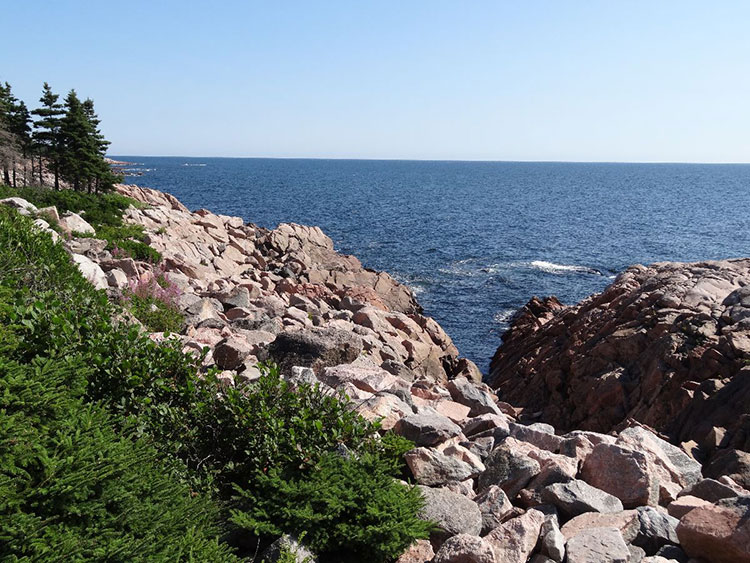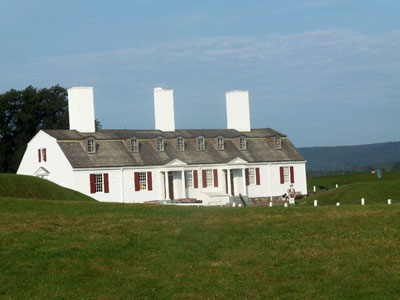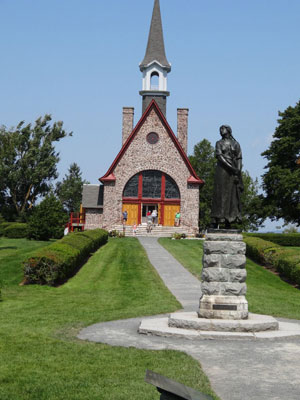Indulging in the scenery and seafood of Nova Scotia
This article appears on page 50 of the December 2013 issue.
by Emilee Hines; Hendersonville, NC
Nova Scotia is the ideal place to vacation. Nova Scotians are friendly and helpful, and for Americans there is no language barrier. The roads are well marked, the Canadian dollar is close in value to the American dollar, and this maritime province has beautiful scenery, an interesting history and seafood galore.
An introduction
My traveling companion, Jerry Liedl, and I flew to Halifax, the provincial capital, on Aug. 14, 2013, and were met by friends Ron and Pauline Morrison. We spent two nights at the Delta Halifax Hotel (902/425-6700), located close to shopping, the Citadel and the picturesque waterfront. We paid $169 per night for our room. (All prices in this article are in US dollars.)
Besides a convenient location, the hotel had an excellent restaurant. That night we each had the special lobster dinner for only $25, which included a whole lobster, bread, vegetables and a clam appetizer.
We topped it off by sharing their “Parade of Sail” dessert ($10): peanut butter cheesecake glazed in dark chocolate, with a spun-sugar mast supporting triangular cookie sails. Beside it was pistachio ice cream, caramel sauce and fresh raspberries.
With Ron, a former government executive and a knowledgeable historian, as our guide for sightseeing in Halifax, we drove along the Bedford Basin, the site of a horrendous collision in December 1917 between two ships in the channel. One of them was loaded with explosive cargo, and the result was the largest manmade explosion until the one at Hiroshima. It destroyed more than a square mile of Halifax and killed over 2,000 people. A book, “The Town That Died,” tells the horrifying story.
Then it was on to something more pleasant: Hemlock Ravine Park and the rotunda built by Edward, Duke of Kent, in the 1790s. A central feature of the park is a heart-shaped pool Edward built for his mistress.
Over the years, the property gradually decayed, but it has since been restored, with hiking trails and beautiful native flowers and greenery.
We drove up to the Citadel for views of the city and could have toured the barracks and had a historical lecture, but I had done that on a previous visit and we had more sites to visit, including the university, with its nearby, unique stone housing and trendy student district, plus Halifax’s public gardens and the cemetery where victims of the 1917 ship explosion and of the Titanic disaster are buried.
Historic sights
Ron arranged a private tour for us of Province House (1726 Hollis St.), where the legislature of Nova Scotia has met since 1819.
The building is a gem of Palladian architecture and includes not only the legislative chamber but the legislative library, a museum of Nova Scotia history and the elegant Red Chamber.
Used for a century as the meeting place of the upper chamber of government, which was abolished in 1928, the chamber is now used for receptions and ceremonial occasions and gives new meaning to “walking the red carpet.” (For tours and opening hours, call 902/424-4661.)
After lunch we walked Halifax’s colorful waterfront, lined with numerous seafood restaurants and kiosks selling all kinds of goods. A “must see” in the waterfront area is the Maritime Museum of the Atlantic (1675 Lower Water St., 902/424-7490). The survivors and bodies from the Titanic arrived first in Halifax, and the museum includes artifacts from that disaster as well as from other shipwrecks.
Docked in the harbor just outside is the Sackville, one of the last remaining corvettes used as a convoy escort in World War II, and the CSS Acadia, a former hydrographic surveying vessel. For children, the tugboat Theodore Too is available for rides.
Our day ended with a visit to Dingle Tower in Fleming Park, built in 1912 to commemorate the convening of the first elected legislature of Nova Scotia in 1758. The tower offers views of nearby parkland and marinas.
Cape Breton
The next morning we picked up our rental car and set off northeastward toward Cape Breton, guided by our Garmin GPS. After following routes 102 and 104, we crossed the Canso Strait and stopped for lunch at The Farmer’s Daughter Country Market, a general store that sold sandwiches, local produce and 42 flavors of ice cream. Besides lunch, we bought a quart of lush strawberries and a pint of tiny wild blueberries for later snacking.
Continuing along the shore of the Bras d’Or, we drove northeastward to Sydney. Sydney is the port for ferries to Newfoundland and also is a central place to stay if visiting Fortress Louisbourg.
The fortress is a reconstruction of the huge installation built by the French in the early 18th century, and, in addition to the thick-walled fort, it includes an unheated chapel and replicas of various homes. Soldiers in uniform and wrapped in blankets stood by campfires, and hostesses in long woolen dresses showed visitors around chilly buildings heated by fireplaces.
We dined on food typical of 18th-century fare: root vegetables, beef and coarse bread, all served with pewter utensils ($16 each).
The Cabot Trail
From Sydney we headed to the Cabot Trail via Ingonish, having keyed the town into our GPS. Ignoring road signs indicating a route to the Cabot Trail, we followed the Garmin’s directions and arrived at a ferry terminal, only to see the ferry departing. We turned around and soon heard the familiar “Recalculating” as we found the land route to the trail.
The Cabot Trail is one of the most beautiful drives in North America. Skirting the Atlantic Ocean, it crosses through Cape Breton Highlands National Park, then heads south along the coast of the Gulf of St. Lawrence. We had clear, balmy weather and stopped at numerous turnouts for photos and to read the park’s information plaques.
Admission to Cape Breton Highlands National Park cost $7.25 per day for us, as seniors. There are varying rates for children and adults and a special price for an entire family.
We stopped for lunch at Hometown Kitchen at Cheticamp, located on the Gulf of St. Lawrence. It was, indeed, a homey place.
When I ordered the lobster salad sandwich, our waitress said, “An excellent choice.” When Jerry ordered crab cakes, she said nothing. The lobster salad was delicious; the crab cakes were not.
Our meal, including root beer, coffee and a shared lemon meringue pie, cost $44 with tip.
We spent the night at Maritime Inn Port Hawkesbury (902/625-0320) at a cost of $161, including tax. It was rather fusty and in need of redoing, but it was conveniently located.
Around the waterfront
By mid morning we were in Pictou, a quaint, interesting port with much to see and do. The Grohmann knife factory tour is free, provided there are at least four adults in your group. The knife I bought there was expensive but of excellent quality, and I had watched it being made.
On the waterfront are a genealogy museum, a lighthouse and a small museum devoted to lobsters and lobster fishing. Since I’m fond of eating lobster, I found this museum especially interesting.
Close by is moored a full-size replica of the Hector, the ship that in 1773 brought 179 immigrants from Scotland. Pictou became the port of entry for Scots and is called “the birthplace of New Scotland.” There is a charge to tour the ship ($6) and the nearby interpretive center.
We had lunch at Settlers Saltwater Café & Pub sitting on the porch facing the water. Our choice, again, was lobster salad sandwiches, which came with some of the best onion rings I’ve ever had. We also had crab soup, beverages and ice cream, bringing our total to $66, including a tip and the usual 15% tax.
That night was spent at the Holiday Inn & Conference Center at Truro (902/895-1651), located in an upscale neighborhood on Prince Street. The room ($235 including dinner and breakfast) was comfortable and well equipped, but the food was expensive and not very tasty.
We did no sightseeing in Truro, though we might have seen the tidal bore, the wave that comes rushing in before the incoming tide, if we’d planned ahead and arrived at the right time.
Grand Pré
Grand Pré was our next stop. A film in the interpretive center told the story of the Acadian settlers and of the frequent battles there between the British and the French. The worst attack on British troops at Grand Pré killed 100 soldiers in February 1747 and convinced the British that the Acadians were helping the attackers and, thus, had to be removed. Over a period of six years Acadians were dispersed to British colonies all over North America.
As the troops rounded up the settlers at Grand Pré and herded them onto ships, they burned everything behind them. What we saw at Grand Pré, with the exception of the cemetery, was a reconstruction of the village.
After walking the grounds at Grand Pré, we were hungry enough to eat… lobster! We had excellent lobster sandwiches, Caesar salad and cherry pie à la mode at the Evangeline Café, located just outside the entrance to the Grand Pré Historic Site. Our delicious lunch cost $41.
All afternoon we drove westward — past orchards and vast fields of corn and hay and through the Annapolis Valley — to Digby, where we stayed two nights at the Admiral Digby Inn. Located on the Bay of Fundy, the inn was a bit austere, but the view and the food made up for any lack of amenities.
Annapolis Royal
The next morning we set off for Annapolis Royal, the first capital of Nova Scotia. The original fort there was built in the 1630s by the French and enlarged by the British. We arrived before Fort Anne opened for the day and walked the entire circuit of the ramparts.
Admission to the fort cost $3.50 each (senior). Inside were tapestries of local history and well-executed displays of the history of the Mi’kmaq, the original inhabitants of the area, as well as of the Acadians, Planters and Loyalists, many of whom fled from what became the United States when war began with England in 1775.
St. George Street, the main thoroughfare of Annapolis Royal, is lined with historic buildings, bookstores and leather-goods stores. The many restaurants there post their menus outside, and we chose Restaurant Composé partly because it began to rain as we studied its menu. It was a good choice, nevertheless.
We had the “world famous” Digby scallops plus salad and pecan caramel flan, which turned out to be pecan pie. Our bill totaled $49.
We worked off a few calories walking through the extensive (17-acre) Royal Historic Gardens ($18.90 for the two of us). Each garden represented a historic period of Nova Scotia. Two that I especially liked were the Acadian garden, with its replica of a 1671 thatch-roof cottage, and the rose garden, where we strolled among nearly 2,000 bushes of 250 varieties.
The Annapolis Royal Tidal Generating Station, where electric power is generated by harnessing a small portion of the powerful tides of the Bay of Fundy, is another “must see.” We were taken to several levels of the generating station by a knowledgeable guide who explained in terms even I could understand how the generation of power worked.
Our last night in Nova Scotia was spent at the Holiday Inn Express at Enfield, which had shuttle service to the car rental return and the airport. Our room rate was $156, including breakfast. They did not have a dining room open for dinner, so we had to walk next door to the Hilton for an expensive and very ordinary meal.
Our visit to Nova Scotia ended with another bonus: we could go through American Immigration and Customs at the Halifax Airport, sparing us the long lines upon our arrival back in the States.
What a pleasant place to visit!




